For Jupiter And Its Limitless Expansion.

For Jupiter and its limitless expansion.
Real stoked with how this one came out 💪🏻
More Posts from Jovian-witch and Others

Crescent Moon, Jupiter and four of its moons.
cosmic witchcraft 101: jovian magick ♃
Jupiter is the fifth planet from the Sun. Due to its massive size, there are multiple ways the planet could have formed. Regardless of its formation process, some scientists believe that Jupiter migrated inward right up to the orbit of Mars after its initial formation. This is referred to as the Grand Tack Hypothesis. In the early solar system, Neptune and the other outer planets may have begun interacting with icy planetesimals, sending comets from one planet to the next, causing Uranus, Neptune, and Saturn to move outwards as the comets moved inwards. When the comets reached Jupiter, the planet’s massive gravity flung the comets into highly elliptical orbits or out of the solar system entirely and Jupiter migrated inwards to conserve angular momentum.
As it made its way towards the Sun, Jupiter’s gravity would have prevented the asteroid belt material from forming into planets and swept away large amounts of material that may have made Mars more massive. Thanks to Saturn, Jupiter stopped its inward migration and turned around, settling approximately where we see it today. As Jupiter moved inward and Saturn moved outward, it’s theorized that they became locked in a 3:2 orbital resonance, with Saturn finishing 3 orbits around the Sun for Jupiter’s 2. Jupiter’s migration may have also brought icy and gaseous material into the inner solar system, helping the inner planets form their atmospheres and perhaps even providing those vital life-giving compounds we can thank for our existence today.
Facts:
Jupiter produces more heat than it receives from the Sun.
Jupiter is more than twice as massive as all the other planets combined.
The planet has at least 67 moons.
Jupiter is NOT a failed star. The smallest stars in the observable universe have about 1/12 of the Sun’s mass, and Jupiter has about 1/1000th of the Sun’s mass. Jupiter is simply a colossal planet.
The Great Red Spot is larger than Earth. It’s a colossal hurricane that’s been going on since the 17th century, maybe even before that.
Jupiter rotates faster than any of the other planets; a Jovian day is only about 10 Earth hours. It takes 11.86 years to orbit around the Sun.
Lighter stripes along the planet are called zones and darker stripes are called belts. They flow in opposite directions and turbulence between regions causes the Jupiter’s storms.
Magickal Correspondences*
Colors: red, white, yellow, brown, purple
Intents: growth, expansion, prosperity, justice, exploration, freedom, protection, spiritual evolution, success, meditation, psychic development, confidence, storm magick
Herbs: frankincense, rosemary, oak, cedar, nutmeg, sage, anise, catnip, sandalwood, rosehips, dandelion, fennel, tansy
Crystals: tin, amethyst, lepidolite, sugilite, lapis lazuli, sapphire, diamond, agate, antimony, rhodocrosite, aragonite, jasper, onyx, amber
*some of these correspondences are based on traditional associations and some are based on my personal associations
cosmic witchcraft 101: jovian magick ♃
Jupiter is the fifth planet from the Sun. Due to its massive size, there are multiple ways the planet could have formed. Regardless of its formation process, some scientists believe that Jupiter migrated inward right up to the orbit of Mars after its initial formation. This is referred to as the Grand Tack Hypothesis. In the early solar system, Neptune and the other outer planets may have begun interacting with icy planetesimals, sending comets from one planet to the next, causing Uranus, Neptune, and Saturn to move outwards as the comets moved inwards. When the comets reached Jupiter, the planet’s massive gravity flung the comets into highly elliptical orbits or out of the solar system entirely and Jupiter migrated inwards to conserve angular momentum.
As it made its way towards the Sun, Jupiter’s gravity would have prevented the asteroid belt material from forming into planets and swept away large amounts of material that may have made Mars more massive. Thanks to Saturn, Jupiter stopped its inward migration and turned around, settling approximately where we see it today. As Jupiter moved inward and Saturn moved outward, it’s theorized that they became locked in a 3:2 orbital resonance, with Saturn finishing 3 orbits around the Sun for Jupiter’s 2. Jupiter’s migration may have also brought icy and gaseous material into the inner solar system, helping the inner planets form their atmospheres and perhaps even providing those vital life-giving compounds we can thank for our existence today.
Facts:
Jupiter produces more heat than it receives from the Sun.
Jupiter is more than twice as massive as all the other planets combined.
The planet has at least 67 moons.
Jupiter is NOT a failed star. The smallest stars in the observable universe have about 1/12 of the Sun’s mass, and Jupiter has about 1/1000th of the Sun’s mass. Jupiter is simply a colossal planet.
The Great Red Spot is larger than Earth. It’s a colossal hurricane that’s been going on since the 17th century, maybe even before that.
Jupiter rotates faster than any of the other planets; a Jovian day is only about 10 Earth hours. It takes 11.86 years to orbit around the Sun.
Lighter stripes along the planet are called zones and darker stripes are called belts. They flow in opposite directions and turbulence between regions causes the Jupiter’s storms.
Magickal Correspondences*
Colors: red, white, yellow, brown, purple
Intents: growth, expansion, prosperity, justice, exploration, freedom, protection, spiritual evolution, success, meditation, psychic development, confidence, storm magick
Herbs: frankincense, rosemary, oak, cedar, nutmeg, sage, anise, catnip, sandalwood, rosehips, dandelion, fennel, tansy
Crystals: tin, amethyst, lepidolite, sugilite, lapis lazuli, sapphire, diamond, agate, antimony, rhodocrosite, aragonite, jasper, onyx, amber
*some of these correspondences are based on traditional associations and some are based on my personal associations

Jupiter









Jupiter in our solar system

Burn for wealth and employment.
From Scott Cunningham’s The Complete Book of Incense, Oils, and Brews


Io transiting Jupiter, photographed by Voyager 1, 31 January 1979. South is up, which is why the Great Red Spot’s in the upper hemisphere.
(As with yesterday’s gif, I’m not fully certain I’ve identified the moon correctly: it looks like Io to me, and the orbital speed seems about right, but for the life of me I can’t get HORIZONS to agree with the pictures: at the time of the first frame (C1541036), my spreadsheet tells me that none of the Galilean moons should even be in the frame. The problem’s fixed if I pretend that the z-coordinate of every position is zero, but that’s cheating….)
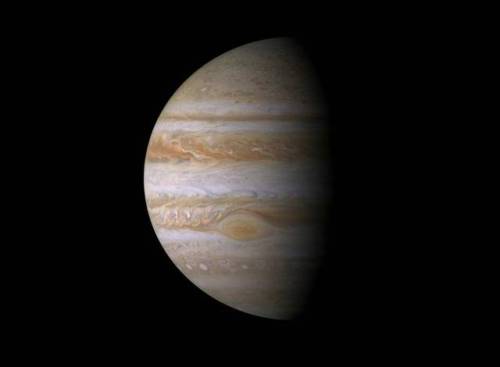
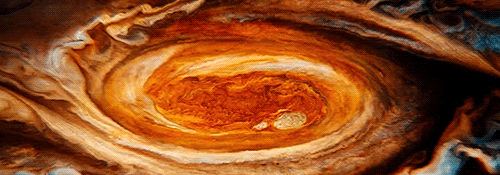
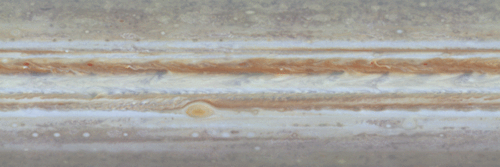
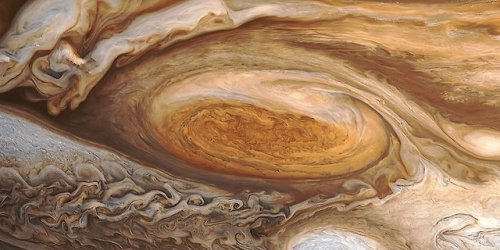
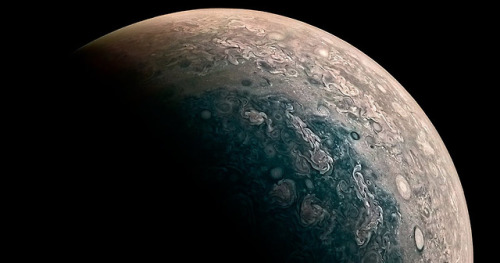
Jupiter is perpetually covered with clouds composed of ammonia crystals and possibly ammonium hydrosulfide. The clouds are located in the tropopause and are arranged into bands of different latitudes, known as tropical regions. These are sub-divided into lighter-hued zones and darker belts. The interactions of these conflicting circulation patterns cause storms and turbulence. Wind speeds of 100 m/s (360 km/h) are common in zonal jets. The zones have been observed to vary in width, color and intensity from year to year, but they have remained sufficiently stable for scientists to give them identifying designations.
The cloud layer is only about 50 km (31 mi) deep, and consists of at least two decks of clouds: a thick lower deck and a thin clearer region. There may also be a thin layer of water clouds underlying the ammonia layer. Supporting the idea of water clouds are the flashes of lightning detected in the atmosphere of Jupiter. These electrical discharges can be up to a thousand times as powerful as lightning on Earth. The water clouds are assumed to generate thunderstorms in the same way as terrestrial thunderstorms, driven by the heat rising from the interior.
source

True-Color Jupiter and Moon
-
 magic-verse reblogged this · 1 year ago
magic-verse reblogged this · 1 year ago -
 windofthegods liked this · 1 year ago
windofthegods liked this · 1 year ago -
 ihrlaa-okvlt reblogged this · 1 year ago
ihrlaa-okvlt reblogged this · 1 year ago -
 ihrlaa reblogged this · 1 year ago
ihrlaa reblogged this · 1 year ago -
 queenjai1214-blog liked this · 2 years ago
queenjai1214-blog liked this · 2 years ago -
 palangemusic liked this · 3 years ago
palangemusic liked this · 3 years ago -
 wintercherryblossom-clouddojo liked this · 3 years ago
wintercherryblossom-clouddojo liked this · 3 years ago -
 yelahiah44 reblogged this · 3 years ago
yelahiah44 reblogged this · 3 years ago -
 yelahiah44 liked this · 3 years ago
yelahiah44 liked this · 3 years ago -
 ethereal-goddess1 reblogged this · 3 years ago
ethereal-goddess1 reblogged this · 3 years ago -
 destielcowboy liked this · 3 years ago
destielcowboy liked this · 3 years ago -
 nymph-faery reblogged this · 4 years ago
nymph-faery reblogged this · 4 years ago -
 leftloverbailiffprofessor reblogged this · 4 years ago
leftloverbailiffprofessor reblogged this · 4 years ago -
 tejiendoluz liked this · 4 years ago
tejiendoluz liked this · 4 years ago -
 flowersforthee liked this · 4 years ago
flowersforthee liked this · 4 years ago -
 mentallyconfusedmodpone liked this · 4 years ago
mentallyconfusedmodpone liked this · 4 years ago -
 jlsprimeof2814 liked this · 4 years ago
jlsprimeof2814 liked this · 4 years ago -
 cormac89 liked this · 4 years ago
cormac89 liked this · 4 years ago -
 mon-fantome liked this · 4 years ago
mon-fantome liked this · 4 years ago -
 yoyoclake liked this · 4 years ago
yoyoclake liked this · 4 years ago -
 jovian-witch reblogged this · 4 years ago
jovian-witch reblogged this · 4 years ago -
 junthebeby liked this · 4 years ago
junthebeby liked this · 4 years ago -
 jovian-witch reblogged this · 4 years ago
jovian-witch reblogged this · 4 years ago -
 a-exists liked this · 4 years ago
a-exists liked this · 4 years ago -
 lavenderbrookemystic reblogged this · 4 years ago
lavenderbrookemystic reblogged this · 4 years ago -
 lavenderbrookemystic liked this · 4 years ago
lavenderbrookemystic liked this · 4 years ago -
 juantoromateuz97 reblogged this · 4 years ago
juantoromateuz97 reblogged this · 4 years ago -
 cezarzero76 liked this · 4 years ago
cezarzero76 liked this · 4 years ago -
 warlockofthenocturnal reblogged this · 4 years ago
warlockofthenocturnal reblogged this · 4 years ago -
 atompolizei liked this · 5 years ago
atompolizei liked this · 5 years ago -
 avira-wolvezevie liked this · 5 years ago
avira-wolvezevie liked this · 5 years ago -
 zachmiller95 liked this · 5 years ago
zachmiller95 liked this · 5 years ago -
 lirimaerspiritualgatherings liked this · 5 years ago
lirimaerspiritualgatherings liked this · 5 years ago -
 satyr-paul reblogged this · 5 years ago
satyr-paul reblogged this · 5 years ago -
 satyr-paul liked this · 5 years ago
satyr-paul liked this · 5 years ago -
 wafflewithcookieflavour reblogged this · 5 years ago
wafflewithcookieflavour reblogged this · 5 years ago -
 yeti-or-not liked this · 5 years ago
yeti-or-not liked this · 5 years ago

blog dedicated to my work with the planet Jupiter
96 posts